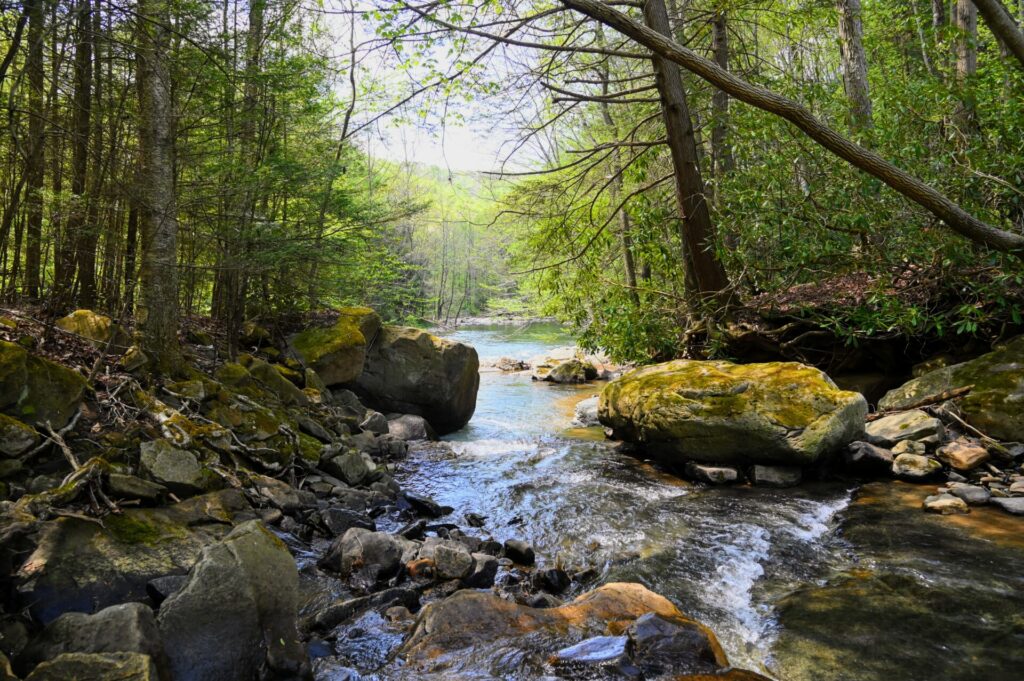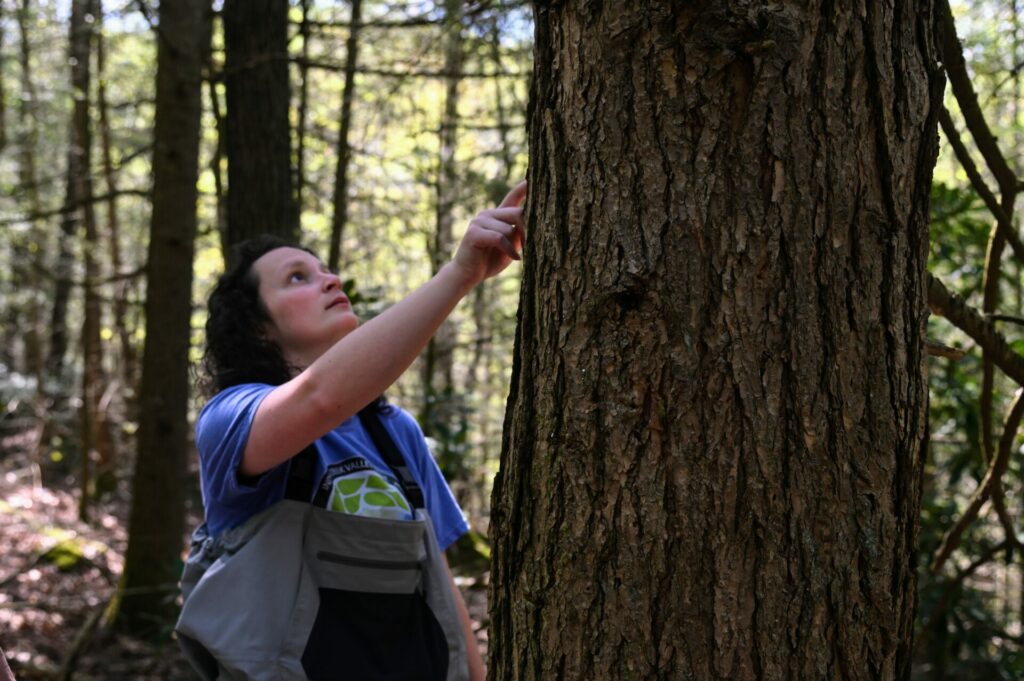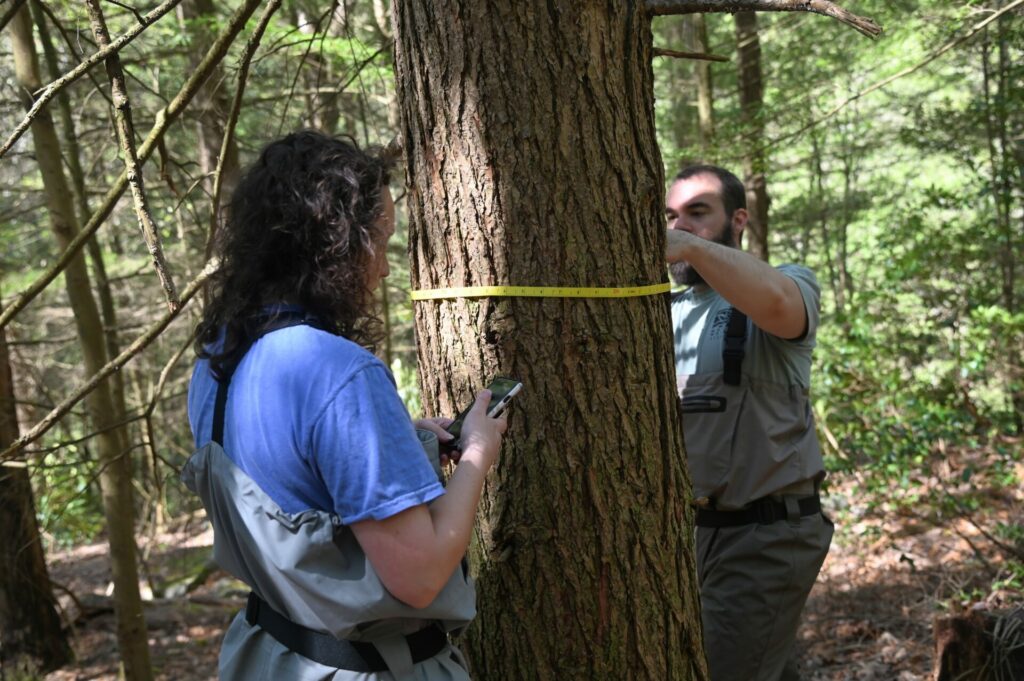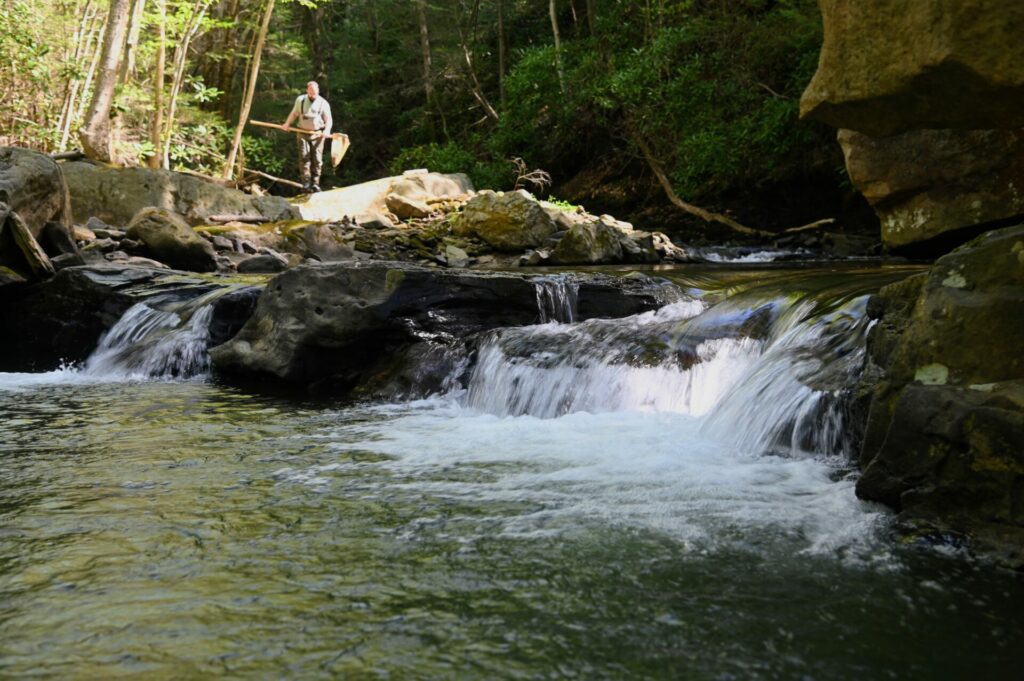In 2023, MWA acquired nearly 200 acres of land to conserve in the Indian Creek gorge. The property, located in Springfield Township of Fayette County, borders both Indian Creek and Rasler Run.

Rasler Run is a tributary to Indian Creek designated as a high quality coldwater fishery and Class A Wild Trout Stream. A large part of the property is designated as a Natural Heritage Area by the Western Pennsylvania Conservancy for its exceptional ecological diversity.
Our vision for the property is to conserve this area’s high ecological diversity, while also welcoming the community for recreational activities such as fishing, hiking and primitive camping. In order to bring this vision to life, MWA first has to conduct biological surveys, develop a management plan for the property and prepare accessible recreational areas.
When completed, the project will not only benefit the local community but also Pennsylvania at large. It will preserve the water quality of Rasler Run, which serves as one of the few Class A Wild Rainbow Trout Fisheries in the state.
Currently, there is restricted access to fishing in Rasler Run, because the majority of the land bordering the creek is privately owned. Once MWA designates recreational areas on the property, the community will finally be able to access Rasler Run on newly public property!

Our team is currently creating a plan to best manage and protect this property. On a preliminary survey, our conservation team noted a thick stand of hemlock trees growing along the stream. One of our main concerns is the presence of Hemlock Woolly Adelgid on these hemlocks.



The hemlock woolly adelgid (Adelges tsugae) is a serious threat to our state tree, the eastern hemlock, in Pennsylvania and across the United States. This non-native invasive insect has caused significant hemlock defoliation and mortality in Pennsylvania forests. Adelgids are an insect related to aphids. They feed on plant sap and interfere with the tree’s use of nutrients, causing:
- Needle drop
- Branch dieback
- Tree mortality
The egg sacs of these insects look like the tips of cotton swabs clinging to the undersides of the current year’s hemlock twigs.
To combat the adelgid, we are currently researching treatment methods that will help Rasler’s hemlock stand thrive.

Our team also sampled the stream for aquatic macroinvertebrates (water-dwelling bugs) to assess water quality. Generally, healthy streams support a diverse population of macroinvertebrates.
We use nets to collect material from the bottom of the stream, then take those samples back to the lab. Using a microscope, we count and identify the macroinvertebrates found in the water. Finally, we calculate the stream health based on the abundance and variety of the organisms we found. These results should be available by the end of the year.

